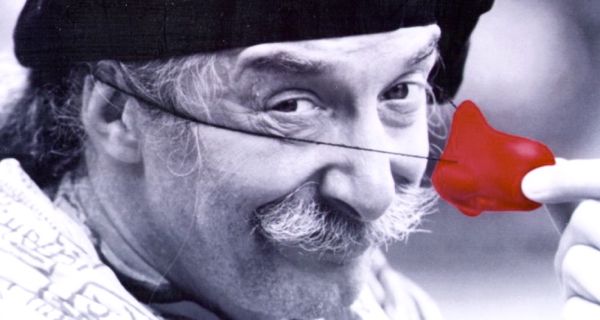When Dr. Patch Adams first starting showing up at hospitals wearing his big red clown’s nose, his fellow MDs thought perhaps he had lost his mind. Many expressed concern for the good doctor’s stability.
Adams asked these dubious medical professionals to humor him. They did. Soon enough, he led the profession into embracing healing of an unusual kind. That of laughter.
Hunter D. “Patch” Adams of Washington, D.C., realized that laughter was an invaluable part of the “cure” that would help hospitalized children in their healing process.
Crazy? Hardly. Adams knew that laughter stimulates endorphins, which serve to oxygenate the brain as well as the cells in our system. This strengthens the immune system and benefits the brain’s chemistry — affecting mood and providing feelings of hope and wellness.
Patch Adams founded the Gesundheit Institute in 1971. Going on “clown trips,” he and several volunteers visited children in hospitals and orphanages around the country, treating the kids to hilarious antics and tricks. Belly laughs and giggling were the prescriptive order.
Care givers often noted marked improvement in the young patients. Adams and Co. also brought moments of joy and relief to worried parents and caregivers.
Laughter itself is not a replacement for processing grief, loss and pain. It’s not always the best medicine. Yet there are times when pain can be so insufferable, so unbearable, that humor can bring the very relief that people seek in situations that are otherwise too extreme and too painful for them to cope.
In 1997, Adams was awarded the Peace Abbey Courage Conscience Award for his work on the importance of developing compassionate concern with patients, including the use of humor.
The psyche is in a continual state of processing experiences in life; it seeks balance and regulation. Too much stress, too much tension, too much pain can cause our immune systems to wear down and become dangerously out of whack.
 The expression comic relief is an old theatrical term, and is identified this way for good reason. William Shakespeare, arguably the greatest playwright of all time, was a master of writing scenes in which characters provided comic relief.
The expression comic relief is an old theatrical term, and is identified this way for good reason. William Shakespeare, arguably the greatest playwright of all time, was a master of writing scenes in which characters provided comic relief.
In “A Midsummer Night’s Dream,” tensions and strife develop as the play progresses. Then the character Nick Bottom appears on stage wearing the head of a donkey. This comedic moment provides balance and relief of tension for the audience.
Abbot and Costello, Laurel and Hardy, and the Three Stooges are among the classic comedians have brought healing laughter and humor to the world via film and TV.
Often when one is feeling low and out of sorts — or simply overloaded with life’s continual demands — few things are more restorative than watching a hilarious old comedy. Curl up with a cup of tea or drink of your choice and have a “good old laugh.”
Finding humor in life is essential for our well being. (Of course, appropriate timing is essential for there is nothing more hurtful or embarrassing than a joke interjected at an inopportune moment.)
When laughter and fun are promoted as a way of life in family systems, chances are not only will you find happier children and adults, but also healthier ones.
Also by Dr. Wood: “Laughter Makes Good Things Happen”
